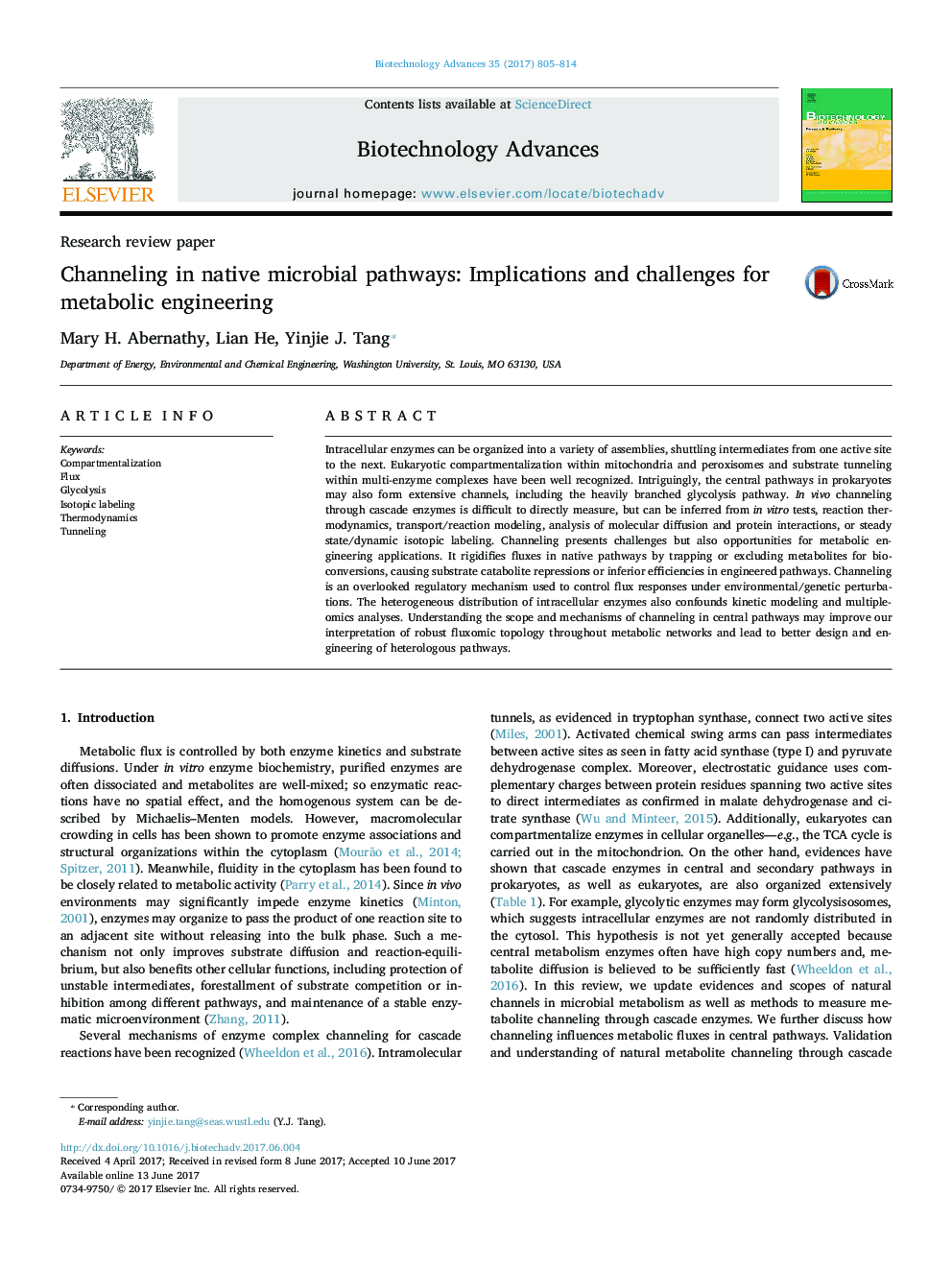| Article ID | Journal | Published Year | Pages | File Type |
|---|---|---|---|---|
| 6451166 | Biotechnology Advances | 2017 | 10 Pages |
Intracellular enzymes can be organized into a variety of assemblies, shuttling intermediates from one active site to the next. Eukaryotic compartmentalization within mitochondria and peroxisomes and substrate tunneling within multi-enzyme complexes have been well recognized. Intriguingly, the central pathways in prokaryotes may also form extensive channels, including the heavily branched glycolysis pathway. In vivo channeling through cascade enzymes is difficult to directly measure, but can be inferred from in vitro tests, reaction thermodynamics, transport/reaction modeling, analysis of molecular diffusion and protein interactions, or steady state/dynamic isotopic labeling. Channeling presents challenges but also opportunities for metabolic engineering applications. It rigidifies fluxes in native pathways by trapping or excluding metabolites for bioconversions, causing substrate catabolite repressions or inferior efficiencies in engineered pathways. Channeling is an overlooked regulatory mechanism used to control flux responses under environmental/genetic perturbations. The heterogeneous distribution of intracellular enzymes also confounds kinetic modeling and multiple-omics analyses. Understanding the scope and mechanisms of channeling in central pathways may improve our interpretation of robust fluxomic topology throughout metabolic networks and lead to better design and engineering of heterologous pathways.
